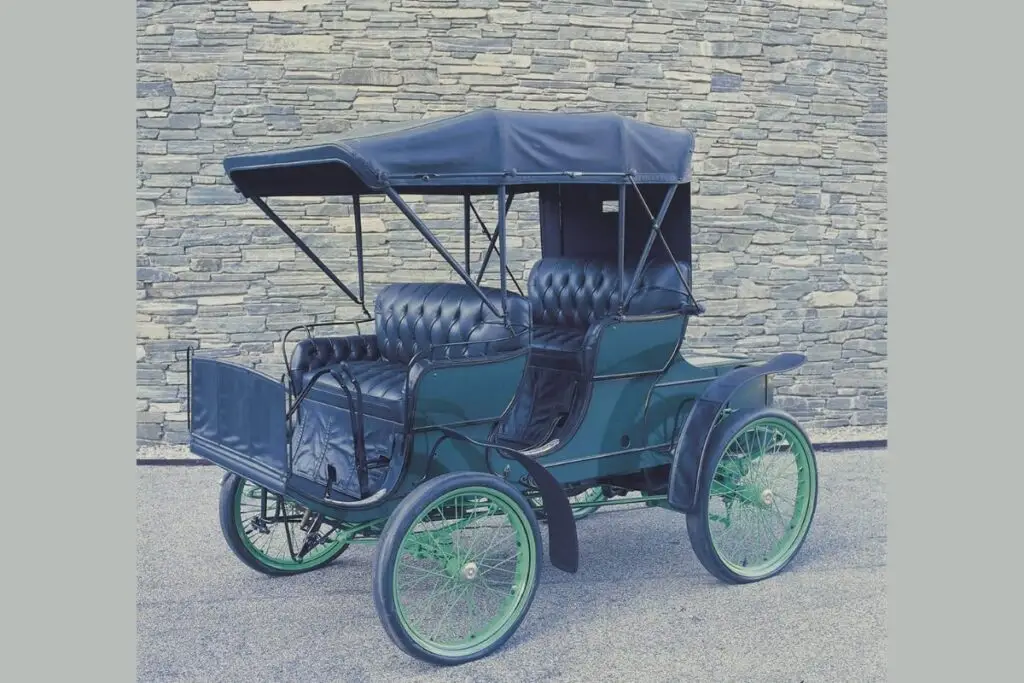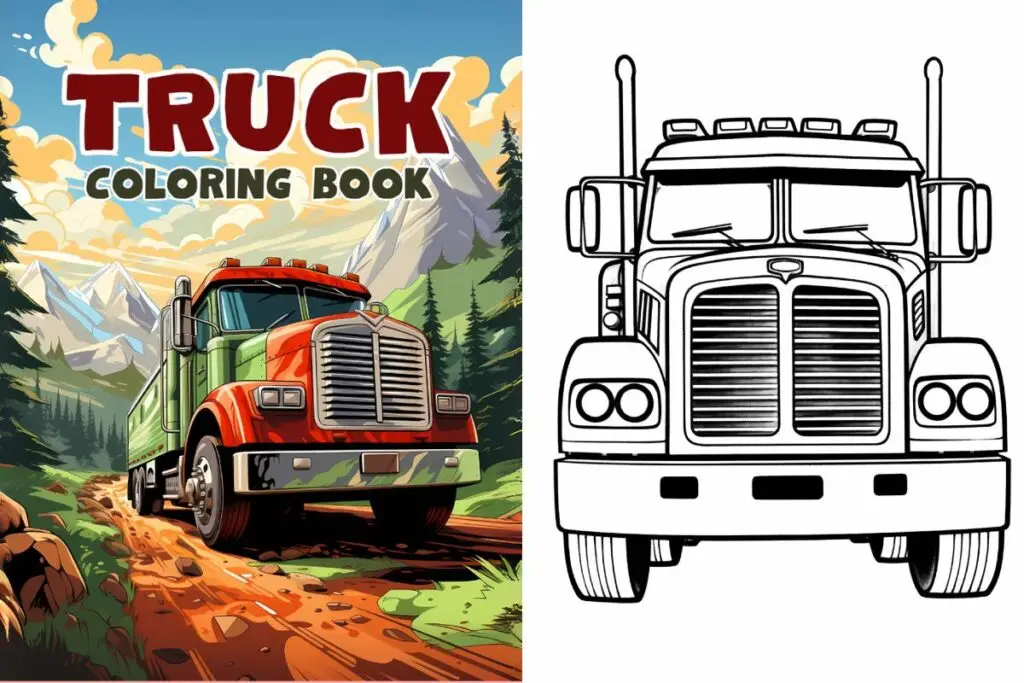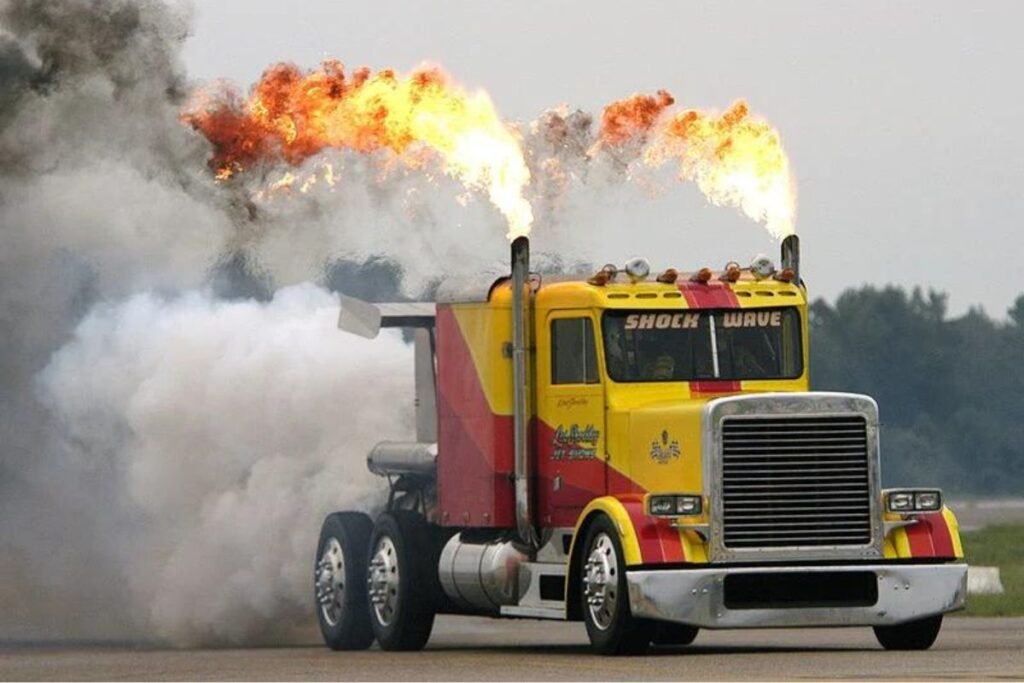Table of Contents
ToggleThe Evolution of Commercial Trucks: A Journey Through Time
The history of commercial trucks is a fascinating chronicle of innovation and progress. Before the advent of the automobile, freight was primarily moved by train or horse-drawn vehicles. The 19th century saw the birth of the trucking industry with the creation of one of the first trailer trucks by the Winton Motor Carriage Company in 1899.
As we moved into the 20th century, the development of the gasoline-powered internal combustion engine and improvements in transmissions marked the beginning of modern trucking. The first state weight limits for trucks were introduced in 1913, aimed at protecting roads from damage caused by early trucks.
The World War I era saw the military’s extensive use of trucks, which led to increased construction of paved roads. The 1930s brought trucking into the mainstream, and the subsequent creation of the Interstate Highway System in the late 1950s and 1960s further accelerated the industry.
Trucking gained national attention during the 1960s and 70s, with popular culture celebrating the truck driving profession through songs and movies.
The industry faced challenges during the energy crises of 1973 and 1979 but emerged stronger with the deregulation of the Motor Carrier Act of 1980.
Today, trucks are an indispensable part of the freight industry, dominating the latter part of the 20th Century and continuing to evolve with technological advancements. This journey from novelty to necessity highlights the truck’s pivotal role in shaping our world’s economic and political landscape.

A Guide to the Types of Trucks on Our Roads
Trucks are the lifeblood of commerce, each designed for a specific purpose. Here’s a rundown of the various types you might encounter on the highway:
1. Day Cab Trucks:
These are the standard bearers for hauling cargo over short to medium distances.
2. Sleeper Trucks:
These come with a sleeping compartment for drivers, making them suitable for long-haul trips.
3. Hydrovacs:
Utilizing high-pressure water and vacuum systems, these trucks are perfect for excavation projects.
4. Semi Trucks (18-wheelers):
The giants of the road, these trucks are essential for transporting large quantities of goods across the country.
5. Flatbed Trucks:
With their open trailers, these trucks are versatile for carrying oversized loads or equipment.
6. Refrigerated Trucks (Reefers):
These are temperature-controlled trucks critical for transporting perishable goods.
7. Tanker Trucks:
Specialized for carrying liquids or gases, these trucks are a common sight on the roads.
8. Box Trucks (Cube Trucks):
Often used by delivery services, these trucks are ideal for transporting smaller loads.
9. Bulker or Bulk Haulers:
These trucks carry loose materials like grain, sand, or gravel in large quantities.
10. Livestock Trucks:
Designed to transport animals, these trucks have specialized features to ensure the safety and comfort of the livestock.
11. Container Trucks (Chassis):
These trucks are designed to carry shipping containers and are a vital link between ports and the distribution network.
Pioneering Power: The First Commercial Truck
The title of being the first commercial truck ever made goes to the Daimler Motor-Lastwagen, designed by the legendary automotive pioneer Gottlieb Daimler in 1896. This groundbreaking vehicle was a far cry from the trucks we see today, resembling more of a cart with an engine rather than a drawbar.
The engine, known as “Phoenix,” was a modest two-cylinder powerhouse producing four horsepower, located at the rear of the truck. It was connected to the rear axle by a belt, a primitive yet effective solution for the time.
The Daimler Motor-Lastwagen was a marvel of its era, rolling on hard iron wheels and steered by a chain that moved the leaf-sprung front axle. The driver’s seat was positioned up front, similar to a carriage, with the engine at the back. Despite its simplicity, this vehicle laid the foundation for the commercial trucks that would eventually become a mainstay of global logistics and transport.

Trailblazing Routes: The Dawn of Commercial Highways
The first highway constructed specifically for commercial transport was the Cumberland Road, also known as the National Road or National Turnpike. This pioneering route was the first road funded by the U.S. federal government, stretching from Cumberland, Maryland, to St. Louis, Missouri. It became a popular route for commercial trade in the 1840s, with Conestoga wagons frequently traversing its expanse.
The Cumberland Road was not just a path but a symbol of progress, promoting westward expansion and encouraging commerce between the Atlantic colonies and the West. Its construction paved the way for the future interstate highway system, setting a precedent for government-funded infrastructure projects designed to bolster economic growth and connectivity.
This historic highway represents a significant milestone in the evolution of road transport, reflecting the growing need for efficient movement of goods and laying the groundwork for the extensive network of highways that crisscross modern landscapes.
Route 66: The Iconic Highway of America
When it comes to the most known highway, Route 66 stands out as an emblem of American culture and history. Officially established in 1926, Route 66 became the first highway to connect Chicago to Los Angeles, covering a vast stretch of 2,000 miles across the midwestern countryside.
This highway, often referred to as the “Mother Road,” symbolized freedom and adventure, leading travelers through rural communities and offering a new kind of driving experience.
Route 66 has been immortalized in countless movies, songs, and stories, becoming a symbol of the American spirit of exploration.
Although it no longer appears on traditional maps as it once did, the remnants of its past still offer a nostalgic glimpse into the era of ticky-tacky tourist shops, attractions, and motels that lined its route. Route 66’s cultural and historical significance ensures that it remains one of the most famous highways not just in America, but around the world.

World’s Most Picturesque Pathways: Scenic Roads to Explore
The world is home to some truly breathtaking roads that offer more than just a way to get from point A to B; they provide an experience in themselves. Here are a few that stand out:
– Chapman’s Peak Drive, South Africa:
This route along the South African coast boasts stunning ocean views and sheer cliff drops, making it a must-visit for any road trip enthusiast.
– Grand Loop Road in Yellowstone, USA:
Driving through Yellowstone National Park, you’ll encounter not just geysers and hot springs, but also vast valleys where wildlife roams freely.
– The Icefields Parkway, Canada:
Connecting Jasper and Banff National Parks, this road offers views of glaciers, turquoise lakes, and towering peaks.
– The Atlantic Road, Norway:
A short but dramatic drive, this road features an archipelago connected by bridges that appear to leap from island to island.
– Ruta 40, Argentina:
Stretching along the length of Argentina, this road takes you through diverse landscapes, from Patagonia’s plains to the Andes’ peaks.
– Milford Road, New Zealand:
Leading to the stunning Milford Sound, this drive showcases the best of New Zealand’s Southern Alps.
– Amalfi Drive, Italy:
Winding along Italy’s Amalfi Coast, this road offers picturesque views of the Mediterranean Sea and charming coastal towns.
– Pacific Coast Highway, USA:
A classic American road trip, this highway runs along the California coastline, featuring iconic views of the Pacific Ocean and its rugged shores.
Each of these roads is a destination in its own right, promising a journey filled with natural beauty and unforgettable vistas. Whether you’re looking for coastal drives, mountain passes, or routes through national parks, these scenic roads are sure to inspire wanderlust.

The Apex of Trucking Luxury: Elite Semi Trucks for the Long Haul
In the world of semi trucks, luxury is defined by power, comfort, and advanced technology. The most luxurious semi trucks of 2024 are marvels of engineering, designed to provide the ultimate driving experience. Here are some of the most opulent semi trucks on the market:
– Mercedes-Benz Actros:
With a starting price of $246,346, the Actros is known for its luxurious interiors, including up to 6’2” of standing room, reclining chairs, two beds, and integrated storage, not to mention an optional integrated refrigerator.
– Volvo VNL 860:
Priced at $240,000, the VNL 860 features a high-roof with a 77-inch sleeper, ergonomically optimized seating, and is powered by a fuel-efficient 13-liter Volvo D13TC engine.
– Kenworth W990:
Starting at $159,900, the W990 offers multiple sleeper cabin options, including an 86” studio sleeper, and is highly customizable both inside and out.
– Mack Anthem:
With prices starting around $100,000, the Anthem combines ruggedness with luxury, offering a comfortable and efficient driving experience.
– International LT:
Ranging from $160,000 to $240,000, the LT is designed for long-haul efficiency and driver comfort.
These semi trucks represent the pinnacle of luxury in the trucking industry, providing drivers with not just a mode of transport, but a mobile living space equipped with all the comforts of home.
Record-Breaking Rigs: The World’s Most Expensive Semi Truck
The title of the most expensive semi-truck ever sold goes to the Thor24, a custom-built behemoth that fetched a staggering $12 million at auction.
This truck is not only the priciest but also one of the most powerful and extravagant semi trucks ever created. It boasts a 44-foot long chassis, a 27-foot long hood, and a massive 1,704 cubic inch V24 engine capable of producing up to 3,424 horsepower and 5,000 lb-ft of torque. The Thor24’s sale price was further boosted to $13.2 million after the auction house’s buyer premium was added. This truck stands as a testament to the extremes of luxury, power, and design in the world of custom semi trucks.

The Fastest Semi-Truck Ever Made
The title of the fastest semi-truck ever made goes to the Shockwave, a jet-powered titan of the road. This semi truck is not just fast; it’s supersonic, reaching a top speed of 376 mph (605.4 km/h).
The Shockwave is powered by three jet engines, which are the secret to its incredible speed. It’s such a unique vehicle that it requires parachutes to slow down effectively before the brakes can be applied. This record-breaking speed was achieved in a controlled environment, as the Shockwave is built for speed demonstrations rather than conventional hauling.

Giants on the Move: The Longest Semi Trucks in Operation
The longest semi trucks, often referred to as “road trains,” primarily operate in regions like Australia and parts of Scandinavia. In Australia, these colossal vehicles are essential for transporting goods across the vast and sparsely populated Outback. They can consist of multiple trailers linked by dollies—sometimes up to four or more—stretching over 50 meters in length.
Similarly, in countries like Sweden and Finland, special permits allow longer truck combinations on specific roads, primarily for transporting timber from forests to mills. These extended vehicles are designed to maximize efficiency and reduce the number of trips needed to move large quantities of goods across significant distances.
Charging Ahead: Electric Semi-Trucks Paving the Future
Electric semi-trucks are increasingly being viewed as the future of the trucking industry. With advancements in technology and growing environmental concerns, electric trucks offer a promising alternative to traditional diesel-powered vehicles. They provide significant benefits such as reduced greenhouse gas emissions, lower total cost of ownership, and improved public health outcomes.
Major fleets are aiming to transition at least 30% of their new heavy-duty truck purchases to zero-emission vehicles, including electric models, by 2030. While challenges like higher upfront costs and limited charging infrastructure exist, policy incentives and technological improvements are expected to drive a surge in adoption.
The journey towards electric semi-trucks began with Tesla’s unveiling of the Tesla Semi in 2017. The Tesla Semi, designed to revolutionize long-haul trucking, was powered by four electric motors and represented a significant step in the evolution of electric commercial vehicles.
However, the first full-scale electric trucks appeared in the 1890s, and the Battronic electric truck, capable of 25 mph with a range of 62 miles and a payload of 2,500 pounds, was delivered in 1964. This marked an early milestone in the development of electric trucks, setting the stage for today’s electric revolution on the highways.

Navigating the Green Road: The Environmental Impact of Semi-Trucks
Semi-trucks have traditionally been associated with significant environmental impacts due to their diesel fuel consumption and the emissions they produce. These vehicles are known for emitting greenhouse gases, which contribute to global warming, and particulate matter, which can affect human health. However, the trucking industry is transforming with the adoption of more sustainable practices and technologies.
Recent advancements have made trucks more environmentally friendly than in the past. Modern semi-trucks are equipped with diesel particulate filters and exhaust gas recirculation systems, which help reduce smog-producing NOx emissions. Additionally, the push towards electric trucks is gaining momentum, with major fleets committing to transitioning to zero-emission vehicles by 2030. This shift is driven by a combination of technological improvements, regulatory pressures, and a growing public awareness of the need for sustainable transportation solutions.
While semi-trucks still face challenges in becoming fully sustainable, the trends indicate a positive direction towards reducing their environmental footprint. With continued innovation and commitment, semi-trucks can play a crucial role in achieving a more eco-friendly future for the transportation sector.
Steering into Tomorrow: The Electrifying Future of Semi-Trucks
The future of semi-trucks is electric, with the industry at the cusp of a major transformation. Electric semi-trucks promise to revolutionize the trucking world with benefits such as reduced greenhouse gas emissions, improved public health, and lower total cost of ownership. The shift towards electric trucks is supported by significant investments in charging infrastructure, advancements in battery technology, and policy incentives like the Inflation Reduction Act and Infrastructure Investment and Jobs Act.
The first wave of electric semi-trucks is already on the horizon, with models like the Tesla Semi expected to hit the roads in the near future. These trucks are designed to offer ranges suitable for long-haul journeys, coupled with the performance and safety features that modern logistics demand. With major fleets committing to transitioning a portion of their purchases to zero-emission vehicles by 2030, the adoption of electric semi-trucks is poised to accelerate.
This electrification trend is part of a broader movement towards sustainability, which also includes automation, connectivity, and innovative design to increase efficiency and reduce the environmental footprint of the trucking industry. As we look ahead, it’s clear that the semi-trucks of tomorrow will be cleaner, smarter, and more efficient than ever before.
Understanding the Terminology: Semi-Trucks vs. Lorries
Semi-trucks and lorries are indeed the same type of heavy-duty vehicle used for transporting goods over long distances. The primary difference between the two lies in the regional terminology. In the United States and Canada, these vehicles are commonly referred to as semi-trucks. In contrast, in the United Kingdom and some other countries, the term lorry is used.
Despite this difference in nomenclature, both terms describe a vehicle designed to efficiently and safely transport goods and materials.
Whether called a semi-truck or a lorry, these vehicles are essential to the global transportation and logistics industry.

Color Your World with “Truck Coloring Book
As we journey through the fascinating world of semi-trucks, why not bring the adventure to life with your artistic flair? Introducing the “Truck Coloring Book,” a creative haven for truck enthusiasts of all ages! This isn’t just any coloring book; it’s a glossy-covered, 8.5 x 11-inch treasure trove of 30 dynamic truck illustrations designed to ignite your imagination and celebrate the majestic world of trucks.
Here’s why the “Truck Coloring Book” is your next must-have:
– Pure Truck Bliss: Dive into a world where semi-trucks and lorries come alive on paper, waiting for your creative touch to unleash their full potential.
– A Perfect Gift: Searching for the ideal present for a truck lover? Look no further! This coloring book captures the spirit of the open road and the joy of trucks.
– Fun Across Generations: Whether you’re a budding young enthusiast or a seasoned truck aficionado, this book bridges the gap, offering shared moments of coloring fun.
– Stress-Relieving Artistry: Beyond the joy of coloring, find a peaceful retreat in these pages, fostering mindfulness and relaxation for both kids and adults.
– An Educational Spin: As you color, embark on an informative journey through different truck models and styles, making learning as fun as it is colorful.
– Focused Creativity: With a clear canvas centered on trucks, your personal style takes the driver’s seat, turning each page into a unique masterpiece.
– Gift of Creativity: Elevate your gift-giving with a book that’s sure to delight. Share your colored masterpieces as heartfelt tokens of friendship and creativity.
Don’t miss out on the chance to color your way through the world of trucks. Grab your “Truck Coloring Book” today and let the vibrant journey begin.

